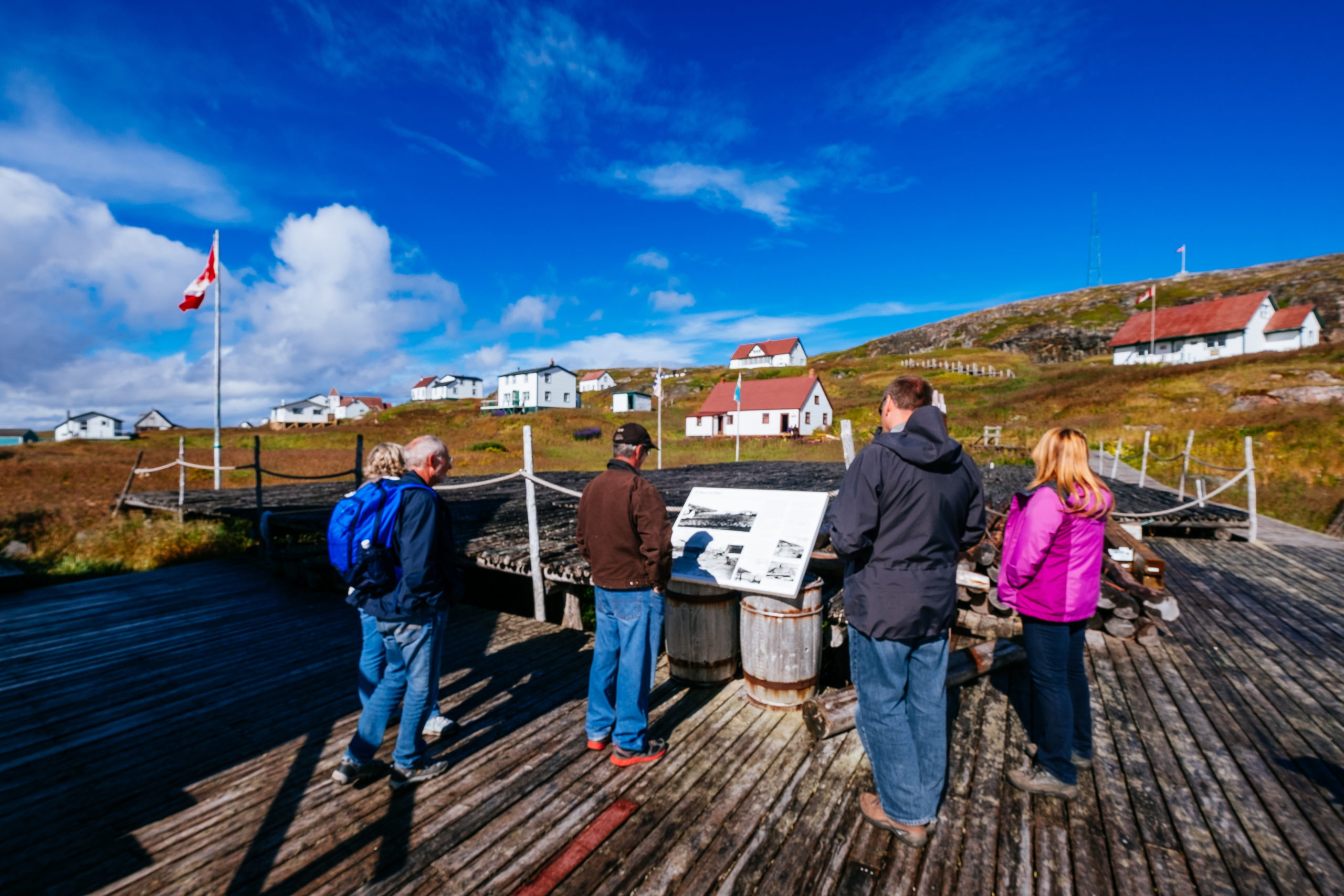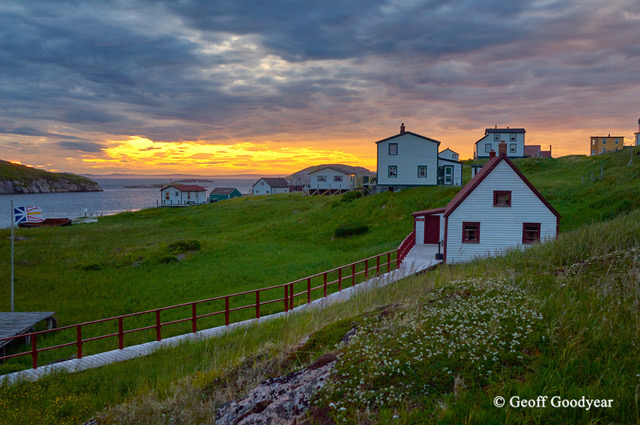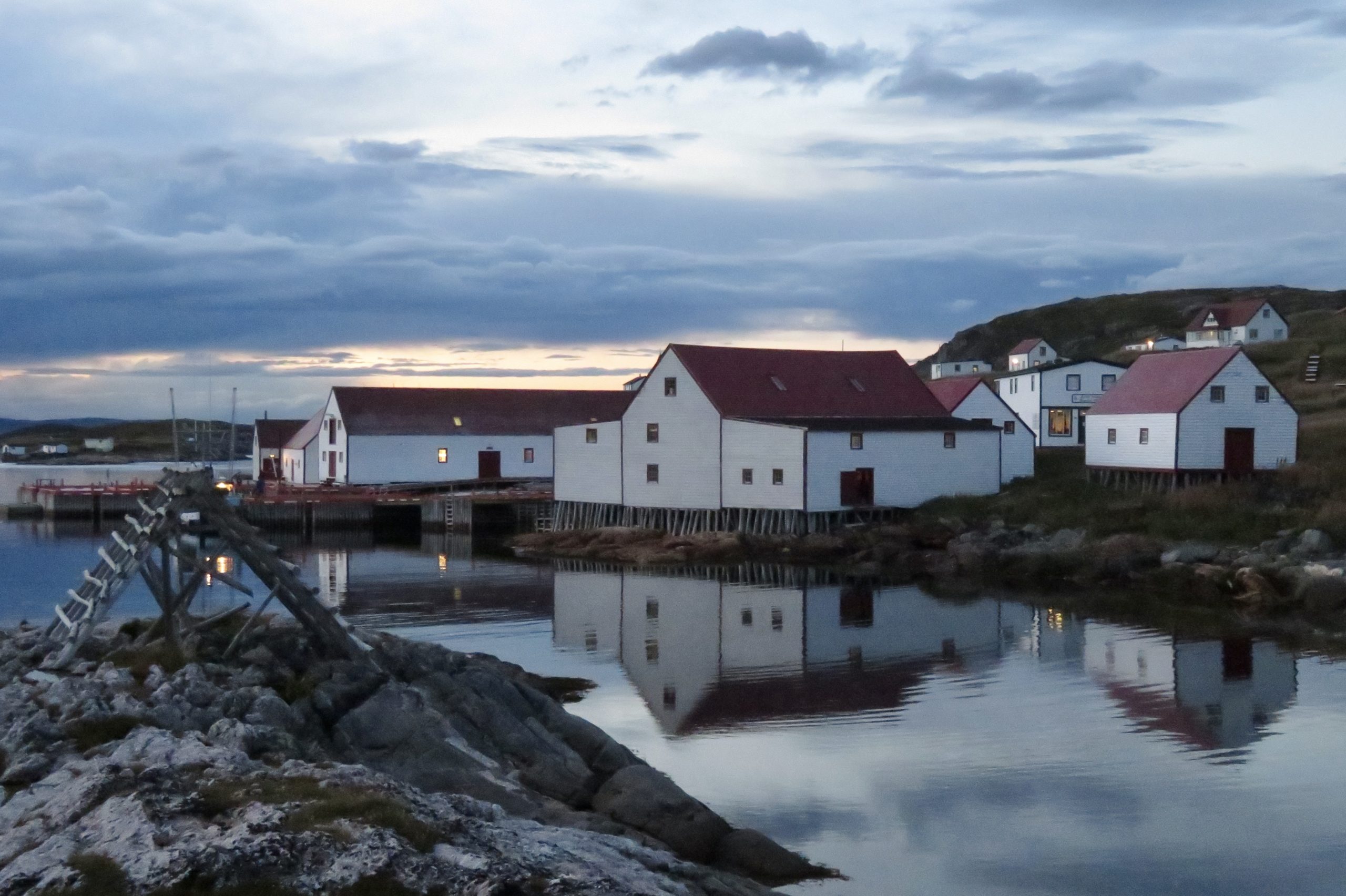Discover the Unofficial Capital of Historic Labrador – Battle Harbour
Today Battle Harbour is a living museum. It preserves and interprets both tangible and intangible history for visitors across the globe to admire.
It was once the social and economic heart of the southeastern Labrador coast during the 19th and early 20th centuries and is known as the unofficial capital of Labrador. Battle Harbour was a salt fish mercantile complex established by John Slade between 1770 and 1775 and operated as a major fishing outport until 1992. Now a National Historic District, this remote island village is a popular tourist destination and monument of Labrador’s history.

Guides explaining the Labrador Salt Cod fishery in front of a “flake” where the salt cod would be dried.
The journey begins on the mainland at Mary’s Harbour where a ferry takes travellers nine miles off the coast towards Battle Harbour. Neighbouring the Great Caribou Island, Battle Island is just 1km long and half km wide, and virtually impossible to get lost on. Battle Harbour was once a bustling port, with countless schooners anchored in the harbour and loads of people coming up to fish. Cod, salmon, and seal were the major exploits of the area, and the fishing village dominated the landscape and included the Gothic Revival Church of St. James the Apostle, Marconi towers, Grenfell Cottage and General Store. Exploring the historic buildings is a fully immersive experience, engaging all your senses. In the Salt Store, where roughly 1800 bags of salt were stored, visitors can still see and smell the pickle that has seeped into the wooden beams.
The fishing metropolis was operated by Slade up until 1877, when it was sold to Baine, Johnston & Co. The fishing premises turned hands again in 1955 when it was sold to the Earle Freighting Service Ltd, who ran it until the early 1990s. Battle Harbour experienced challenges through the decades as residents and fishers faced government resettlement in 1968, moving the full-time residents to mainland Mary’s Harbour in most cases. In 1992, the cod moratorium imposed by the federal government nearly sealed Battle Harbour’s grim fate. The Earle family donated the entire operation to the Battle Harbour Historic Trust Inc. in the early 1990s, and they have since worked to restore and revitalize this iconic site. If it weren’t for passionate and hardworking individuals, along with the Battle Harbour Historic Trust, Battle Harbour could have been lost for good. A true example of Newfoundland and Labrador’s rich mercantile history, Battle Harbour was designated as a National Historic District by the Historic Sites and Monuments Board of Canada in 1998.

Sunset at Battle Harbour. Photo credit: Geoff Goodyear
From June to early September, Battle Harbour has become an island retreat where you can ease your soul and connect with the land, ocean, and people of this magical place. The executive director at Battle Harbour described the subarctic environment of Battle Island as delicate, “the fauna is very delicate, so we try and keep people on the path and everything because you know there is only this much soil [showing several inches with his fingers, showing depth of soil]” With ocean vistas, artic vegetation, and rock formations along with iceberg and whale spotting, the views at Battle Harbour are truly breathtaking. Visitors enjoy overnight accommodations at several of the restored buildings with the added benefit of modern comforts, traditional dishes eaten in the family-style dining hall, and an opportunity to connect with this piece of Labrador history.
Battle Harbour National Historic District is a part of our Passport Places program, a National Trust for Canada membership benefit where members get complimentary access to these fascinating places, as well as 1000+ National Trust Places abroad. Become a member today!


